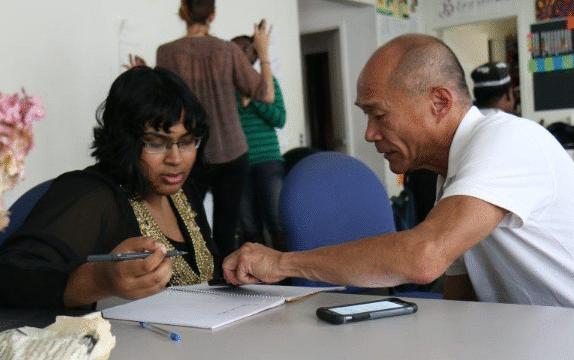In today’s competitive professional world, learning
certificates have become an important way to show
employers, clients, and peers that you are committed
to growth. Whether you have earned a certificate in technology, business, healthcare, or creative fields, the value of these achievements depends not only on receiving them but also on keeping them well maintained. Just like a diploma or professional license, learning certificates require care to remain useful, relevant, and verifiable. If you want your credentials to work for you long after the course ends, it is worth understanding how to properly store, organize, and update them.
The first step in maintaining your learning certificates is knowing their purpose. A certificate is more than just a piece of paper or a digital badge; it represents the time, effort, and knowledge you invested in a particular skill. Employers may ask for proof of your training, schools may accept it as credit toward advanced studies, and in some industries, certificates are required to demonstrate compliance with standards. If these documents are misplaced, outdated, or difficult to verify, you may miss out on opportunities. That is why proper management is so important.
One of the simplest but most effective practices is to keep both digital and physical copies. When you receive a certificate, you might get a paper version, a PDF, or access to an online credentialing platform. If it is paper-based, scan it into a secure digital format. If it is digital, download it and also print a copy. Store the paper certificate in a safe place, such as a folder or binder that is dedicated to your professional achievements. At the same time, keep the digital version in cloud storage or on a personal hard drive, labeled clearly with the certificate name and date. Having duplicates ensures you will always be able to provide proof, even if one format is lost or damaged.
Equally important is organizing your certificates in a way that makes them easy to find. Over the years, you may collect multiple certificates across different industries, schools, or online platforms. If you are not careful, they can quickly become scattered and forgotten. To prevent this, create a system that works for you. For paper copies, consider arranging them by date or by subject in a portfolio. For digital copies, build folders on your computer or cloud drive with clear naming conventions, such as “Project Management 2023 Certificate” or “Healthcare Training Level 2.” This will save time and stress when you need to access them for job applications, promotions, or professional networking.
Another key aspect of maintaining learning certificates is verifying their authenticity. Many organizations now provide verification services where employers can confirm your achievement through a link or reference number. Make sure you know how verification works for each certificate you hold. Save emails, registration numbers, or login details that may be required to confirm your status. If a verification link expires, contact the issuing institution to update it. Staying on top of verification details ensures that your certificates remain credible and trustworthy to others.
Certificates are not static. In some fields, especially those connected to technology, medicine, finance, or safety regulations, certificates may expire or require renewal. Always check whether your credential has an expiration date. If it does, mark it on your calendar and set reminders well before the deadline. Renewal often requires taking a refresher course, attending continuing education sessions, or passing another assessment. Treating renewals as an opportunity for growth rather than a burden can help you stay current with industry standards and keep your skills sharp.
Even if your certificates do not technically expire, industries evolve quickly. A certificate earned several years ago may no longer reflect the latest practices or tools. For example, a certificate in digital marketing from five years ago may not cover new platforms or analytics techniques. To maintain the relevance of your certificates, consider pursuing updated courses every few years. Adding new credentials not only refreshes your knowledge but also shows employers that you are proactive in keeping up with changes. Over time, your portfolio of certificates will demonstrate not only your past achievements but also your ongoing dedication to professional growth.
Presentation also matters when maintaining your learning certificates. It is not enough to store them; you should also make them visible in ways that enhance your career. Create a section on your résumé or curriculum vitae to list your most important certificates, highlighting those most relevant to the job or opportunity you are pursuing. For digital networking, platforms like LinkedIn allow you to upload certificates or link to official verification pages. Doing this increases your professional credibility and can catch the attention of recruiters, colleagues, and collaborators. However, avoid overwhelming your profile with every certificate you have ever earned; focus on the ones that add the most value to your current career path.
Another useful strategy is to build a personal portfolio, either online or as a physical binder. This portfolio can include copies of your certificates along with project samples, testimonials, or other evidence of your skills. By presenting your certificates in a broader context, you show not just what you studied but also how you applied that knowledge. This approach can be particularly effective for freelancers, consultants, and entrepreneurs who want to showcase their qualifications to clients.
Security is another important part of maintaining your certificates. Paper documents should be kept in a safe place where they will not be damaged by water, fire, or pests. Digital certificates should be backed up in multiple locations, such as a cloud drive and an external hard drive. Consider using password protection for sensitive files. You may even want to keep a printed copy in a separate location, such as a family member’s home or a safe deposit box, in case of emergencies. Taking precautions protects the value of your hard-earned achievements.
It is also wise to periodically review your collection of certificates. Once or twice a year, take time to look through them, update your records, and note any upcoming renewals. Ask yourself which certificates still reflect your career goals and which ones might be less relevant now. This practice helps you keep your professional image clear and focused. If you find that some certificates are outdated, do not discard them; they still represent your journey and may be useful for historical context. However, prioritize the certificates that strengthen your current direction.
Maintaining your learning certificates is about more than just storage; it is about making them work for you throughout your career. By keeping them organized, updated, verified, and secure, you ensure they remain a reliable resource. By showcasing them strategically, you can open doors to new opportunities, promotions, and collaborations. Most importantly, by committing to ongoing learning and renewal, you reinforce the message that your growth never stops.
In a world where education and training are constantly evolving, the effort you put into maintaining your certificates demonstrates professionalism, responsibility, and ambition. Whether you are just starting your career or have decades of experience, treating your certificates as valuable assets will help you stand out. Think of them as building blocks that, when cared for properly, create a strong foundation for success.






